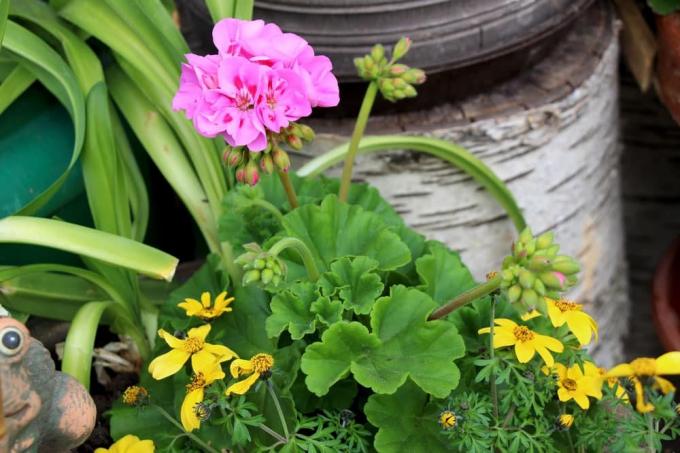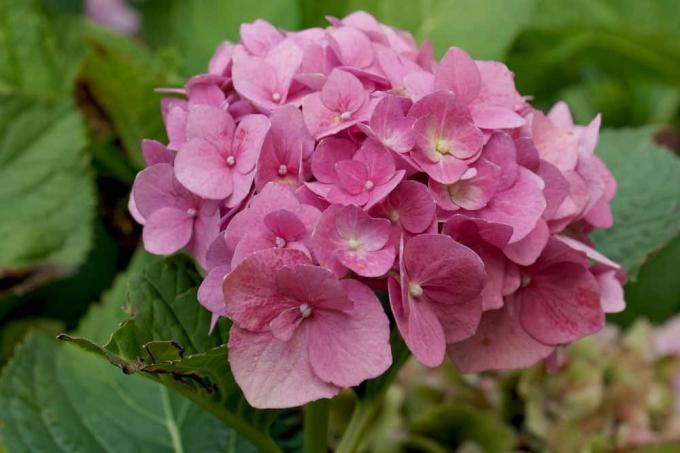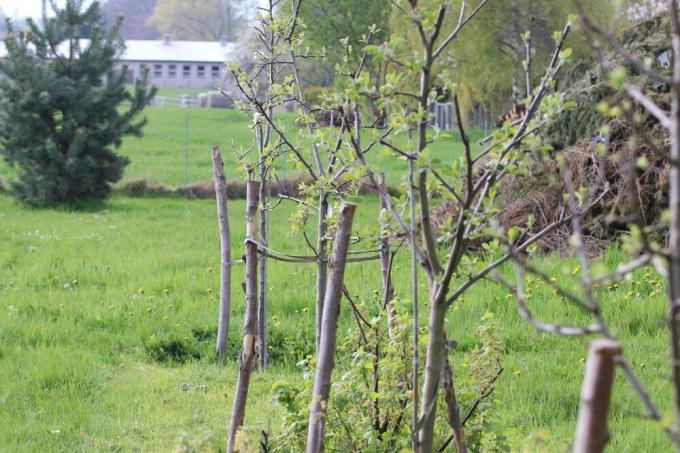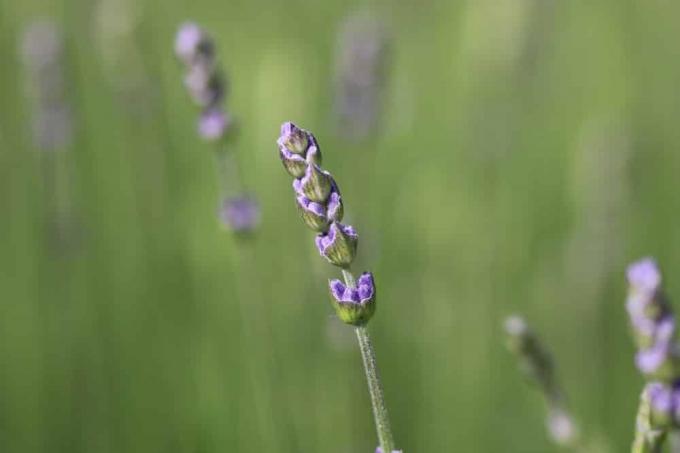

Table of contents
- Spring planting time
- Planting time summer
- Planting time autumn
- The most common mistakes when planting flower boxes
- substrate and plants
- casting problems
- Mistakes in sowing and planting
- The best plants for north, east, south and west balconies
- north balconies
- East and West balconies
- south balconies
- Conclusion
The best planting time for flowers depends, among other things, on the type of flower in question, the flowering time and its frost resistance. There is no universally accepted best planting time. Both flower boxes and tubs can be planted almost all year round with plants suitable for the respective season. While the first flowers that bloom in summer or autumn can be brought forward as early as February/March, others can even be planted well into winter if the temperatures are mild. The prerequisite is, of course, always a frost-free ground.
Spring planting time
March to May is the best time to plant for fall and summer bloomers. From March/April, summer-flowering bulbs can be planted in tubs or boxes, e.g. B. Lilies, gladioli, begonias, cyclamen, montbretia or the canna. Other summer bloomers such as slipper flowers, snapdragons, fairy mirrors, busy Lizzies, ice begonias, verbena or purslanes can be grown indoors from March.
With the beginning of the frost-free period, the quite frost-sensitive geraniums, begonias, fuchsias, dahlias or the hard-working Lizzie can be planted directly in flower boxes. It is important here that it is not too early or not planted before the icy saints, because tubers like dahlias are also very sensitive to frost.
Winter asters and hardy chrysanthemums can also be planted in spring, although these flowers can also be planted in autumn. Spring planting is more advantageous here, however, so that the plants can form sufficient roots and gather strength for the formation of flowers by autumn.
Tip:
Bulb flowers that have spent the winter in the flower box in the basement should also not be taken outside before the ice saints, because only then is the danger of night frosts averted.
Planting time summer
- Even in summer, flowers can still be planted in tubs or window boxes.
- However, the selection isn't that big anymore.
- – In summer, special varieties are planted that are in season in autumn.
- Accordingly, August is the best time to plant late-blooming flowers, for example.
- These include, for example, autumn crocuses, the autumn crocus or the sternbergie.
- About 6 weeks after planting, these autumn bloomers are already showing their full blooms.
Tip:
Flowers that are planted in summer should initially be protected from the blazing sun and watered sufficiently, preferably in the early evening hours.
Planting time autumn
In autumn, the first summer flowers are transported to the cellar to overwinter. Between September and October, depending on the weather, sometimes even December, is also the best time to plant spring flowering bulbs. The prettiest early bloomers that can now be planted in boxes and tubs are mainly onion flowers such as tulips, Hyacinths, crocuses, daffodils, snowdrops, snowflakes, crown imperials, anemones, winterlings, squill and daffodils.
Smaller flowering perennials such as Adonis, violets or liverworts are also best planted in autumn. They are now planted in window boxes and overwintered in an unheated basement until spring they finally move outside on the balcony or terrace after the ice saints, i.e. from about the middle can. Autumn is also the best time to plant, for example, the frost-resistant pansies or To plant horned violets, which usually survive the winter well and are in full bloom in spring shine. Now is also the right time to divide spring and summer flowering perennials, but also to transplant or replant them.
Tip:
If there is a longer frost-free period, typical early bloomers can also be plugged in or planted in winter. The popular Christmas rose is one of the few plants that can be planted well into winter.
The most common mistakes when planting flower boxes
substrate and plants
When planting flower boxes, you should pay attention to the highest quality potting soil, because this is a basic requirement for optimal growth and the willingness to bloom of the various plants. You can also go wrong when choosing plants. Low-growing flowers are particularly suitable for flower boxes; perennials that grow too high would draw too much energy from the substrate and thus compete with low-growing species. When buying flowers, only those varieties should be preferred that have a well-developed root ball, otherwise there may be problems with the growth. When you lift the plants out of the pot, the root ball should be clearly visible.
casting problems
As a rule, most mistakes are made during casting. First, good drainage is essential. A fleece is laid on top of the drainage and then the earth is laid on top of it. It should be watered thoroughly immediately after planting. In order to avoid burns from the sun, you should not water in the blazing midday sun, but rather in the morning or in the early evening hours.

Also, one should not pour over flowers and leaves and ideally with rainwater. In the meantime, flower boxes with so-called filler necks are also available on the market. These have the advantage that the plants always have a certain water reservoir, which is particularly useful if you are often away for a long time.
Mistakes in sowing and planting
- When sowing the balcony flowers, you have to distinguish between light and dark germs.
- It is also important to separate the seedlings as early as possible.
- Before planting, it is advisable to thoroughly water the root balls of the flowers.
- After planting the plants, don't forget to press down the soil well.
- This is to prevent cavities from forming in the ground.
Tip:
Cavities left in the ground could encourage mold growth and damage the flowers in the long run.
The best plants for north, east, south and west balconies
north balconies
When choosing the flowers for planting in flower boxes, the orientation of the balcony plays a decisive role, because the plants only thrive in the best location. Little or no sun gets on north-facing balconies. Therefore, plants that feel more comfortable in the shade are suitable for this. These include lobelia, busy Lizzie, hydrangea, begonia, dahlia, snowflake flower or purple bells.
East and West balconies
East and west balconies are usually ideal for planting, because here the plants are sometimes sunny and sometimes shady, ideal conditions for most plants. While east-facing balconies get the most sun in the morning, west-facing balconies tend to be sunny in the evenings. Accordingly, flowers that are suitable for partially shaded areas can be planted here. These could be petunias, for example, but lilies, night violets, chrysanthemums, hydrangeas, fuchsias, dahlias or busy Lizzies would also be suitable for this.
south balconies
For south-facing balconies, you should only choose flowers that tolerate sun all day long, even blazing midday sun in summer. They include daisies, petunias, lantana, geraniums, the blue fan flower, elfin spur, blue daisy, hussar's head, purslane or vanilla flower.
Conclusion
Flowering areas are usually only sparsely available, especially in cities. It is all the more important to equip your own balcony with lush flower boxes and tubs. It is not possible to generalize about the best planting times for the different types of flowers, as they depend on a number of factors. While frost-sensitive plants are mainly planted in spring, some frost-hardy plants can be planted well into winter. In addition to the robustness of the plants, the orientation of the balcony also plays an important role. For example, if you plant sun-seeking flowers on a north-facing balcony, you will not enjoy the plants, even with the best care, because they cannot develop optimally here.
 garden editorial
garden editorial I write about everything that interests me in my garden.
Learn more about planting times

When do you plant fruit trees? 7 tips for planting time
Fruit trees have different requirements when it comes to the ideal planting time. It is important to take differences into account and to meet the respective needs. With the right expert tips, it works without any problems.

Hydrangea planting time: when is it ideal?
When is the best time to plant hydrangeas? We get to the bottom of the question and present you with the advantages and disadvantages of each season!

Viticulture | When is the best time to plant vines?
The right planting time is an important milestone in successful viticulture. Don't guess anymore when to plant vines for a bounty of juicy grapes. Read all the information about the best time to plant wine here. This guide reveals why a distinction should be made between bare-root and potted vines when choosing the date.

When is the best time to plant trees? Information at the best time
There are many reasons to plant a tree, be it as a house tree, to provide shade, to harvest fruit or because of its very individual appearance. Trees offer a variety of design options and an unimagined diversity of species. The times at which they are offered in stores usually correspond to the planting times.

When do you plant hedges? The best planting time for hedge plants
For years, hedges have served as natural privacy and wind protection or as evergreen property borders for house and garden. When it comes to setting up a good privacy screen in a short time, high hedges are the most desirable. You can also choose between low-growing, evergreen, deciduous and flowering hedges, some with different planting times.

When to plant lavender? The ideal planting time is spring/autumn
Originally native to the western Mediterranean region, lavender has been unfolding its aromatic scent in domestic gardens for several centuries. Passionate hobby gardeners only have to pay a little attention to the planting in order to enjoy the easy-to-cultivate bushes for many years.



